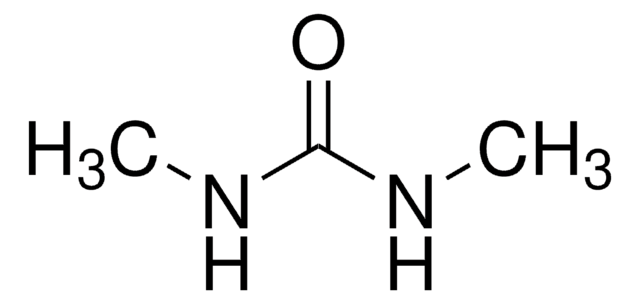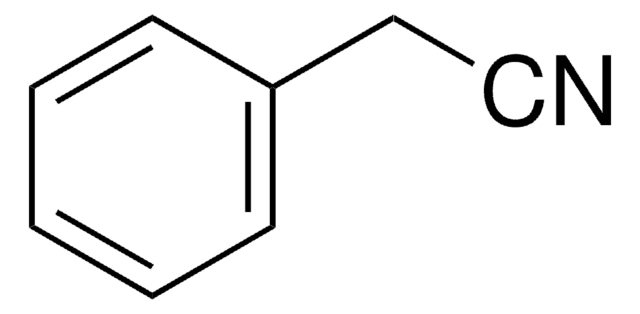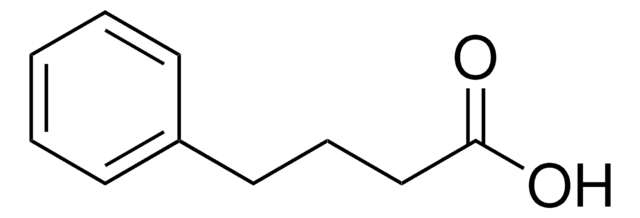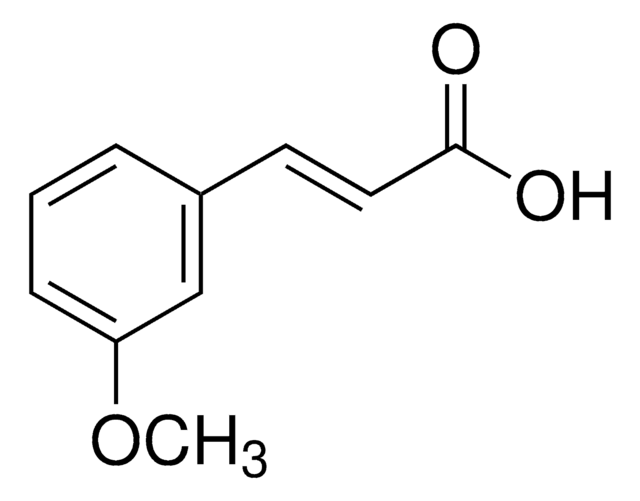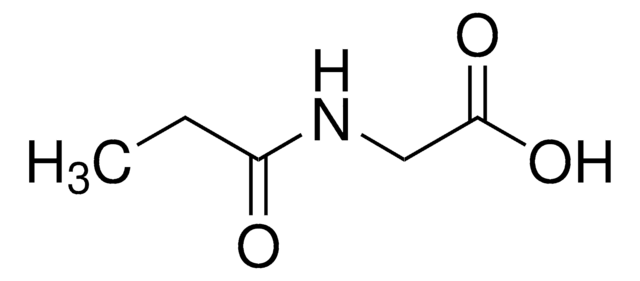推荐产品
等级
analytical standard
质量水平
方案
≥98.0% (HPLC)
保质期
limited shelf life, expiry date on the label
应用
clinical testing
包装形式
neat
储存温度
2-8°C
SMILES字符串
OC(CNC(CC1=CC=C(O)C=C1)=O)=O
InChI
1S/C10H11NO4/c12-8-3-1-7(2-4-8)5-9(13)11-6-10(14)15/h1-4,12H,5-6H2,(H,11,13)(H,14,15)
InChI key
CPPDWYIPKSSNNM-UHFFFAOYSA-N
相关类别
生化/生理作用
Hydroxyphenylacetylglycine is an acylglycine. Acylglycines are normally minor metabolites of fatty acids. However, the excretion of certain acylglycines is increased in several inborn errors of metabolism. In certain cases the measurement of these metabolites in body fluids can be used to diagnose disorders associated with mitochondrial fatty acid beta-oxidation. Acyl glycines are produced through the action of glycine N-acyltransferase (EC 2.3.1.13) which is an enzyme that catalyzes the chemical reaction: acyl-CoA + glycine ↔ CoA + N-acylglycine. Hydroxyphenylacetylglycine is an endogenous human metabolite. It can be originated from the metabolism of tyramine, itself is a monoamine compound derived from the amino acid tyrosine. Hydroxyphenylacetylglycine can also be derived from the metabolism of 3,4-dihydroxyphenylalanine (L-DOPA). In the metabolism of tyrosine, this compound is involved in the reaction Hydroxyphenylacetyl-CoA + Glycine ↔ Hydroxyphenylacetylglycine + CoA, catalyzed by acyltransferase enzymes (EC 2.3.1.-). Hydroxyphenylacetylglycine has been identified in human biofluids.
警示用语:
Warning
危险声明
预防措施声明
危险分类
Eye Irrit. 2 - Skin Irrit. 2
储存分类代码
11 - Combustible Solids
WGK
WGK 3
K Tanaka et al.
Clinical chemistry, 26(13), 1847-1853 (1980-12-01)
A gas-chromatographic method for urinary organic acid analysis is described, designed to be used routinely for the diagnosis of organic aciduria. It involves extraction of urine with ethyl acetate, dehydration of extract residues, and trimethylsilylation. Organic acids are identified by
B L Goodwin et al.
Xenobiotica; the fate of foreign compounds in biological systems, 8(10), 629-651 (1978-10-01)
The metabolism and interrelationships of orally and intraperitoneally administered L-dopa, related amino acids and their metabolites have been studied 2. Amino acids were decarboxylated. N-Methyldopa formed dopamine but not epinine. D-Dopa was absorbed from the intestine and metabolized by a
H S Ramsdell et al.
Biomedical mass spectrometry, 4(4), 220-225 (1977-08-01)
The mass spectra of the methyl esters of twenty-one metabolically important N-acylglycines are reported. The spectra are discussed in terms of their fragmentations and their application to studies of metabolic diseases. In particular, the high relative abundance of the peak
K Tanaka et al.
Clinical chemistry, 26(13), 1839-1846 (1980-12-01)
Gas-chromatographic retention indices are given, in terms of methylene units, for 155 metabolically important compounds (mostly organic acids) as trimethylsilyl derivatives on 10% OV-1 and 10% OV-17 columns. Comprehensive references on metabolic diseases that can be diagnosed by detection of
NEW METABOLITES OF P-TYRAMINE FROM THE URINE OF RATS.
T NAKAJIMA et al.
Biochimica et biophysica acta, 90, 37-44 (1964-07-15)
我们的科学家团队拥有各种研究领域经验,包括生命科学、材料科学、化学合成、色谱、分析及许多其他领域.
联系技术服务部门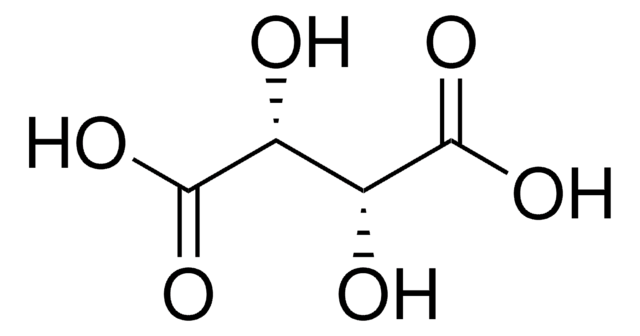
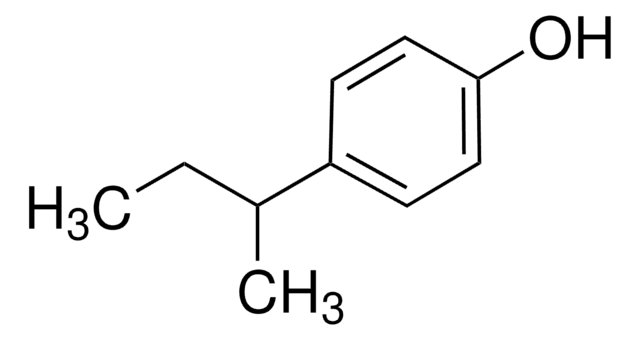
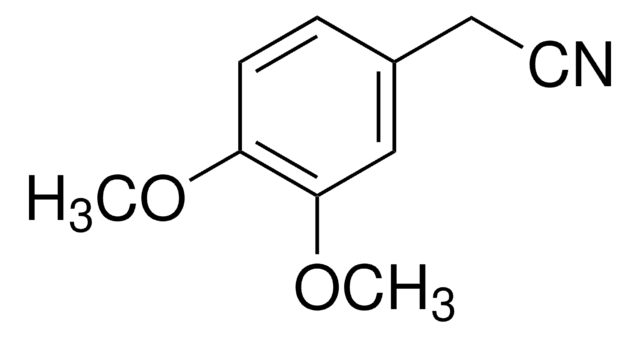
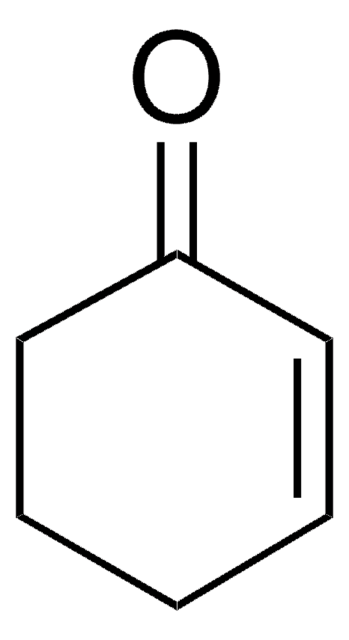
![聚苯乙烯键合型 1,5,7-三氮杂二环[4.4.0]癸-5-烯 extent of labeling: ~3 mmol/g loading](/deepweb/assets/sigmaaldrich/product/structures/760/356/51117498-68bc-4b7f-a8c9-79a572d66a13/640/51117498-68bc-4b7f-a8c9-79a572d66a13.png)
